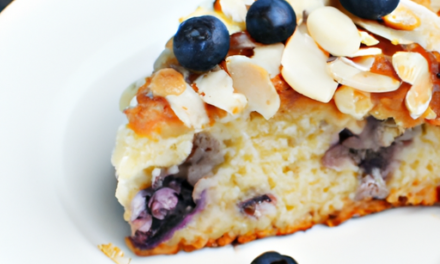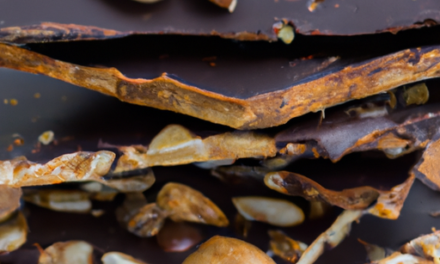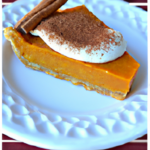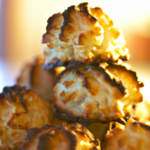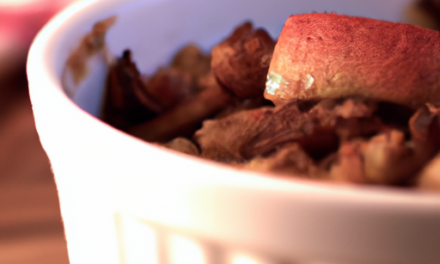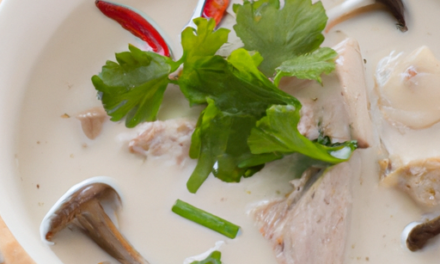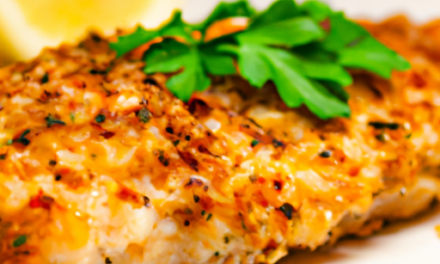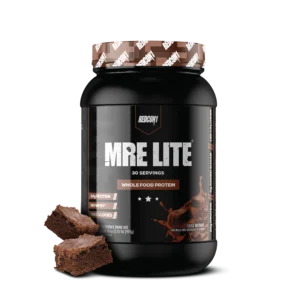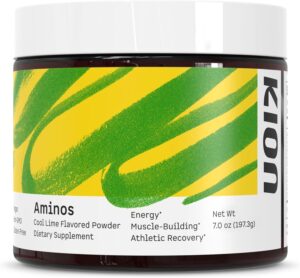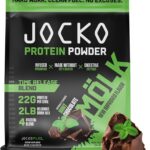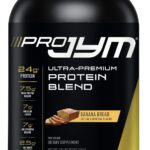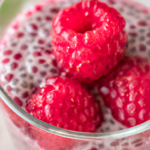
Baked Salmon With Lemon And Dill
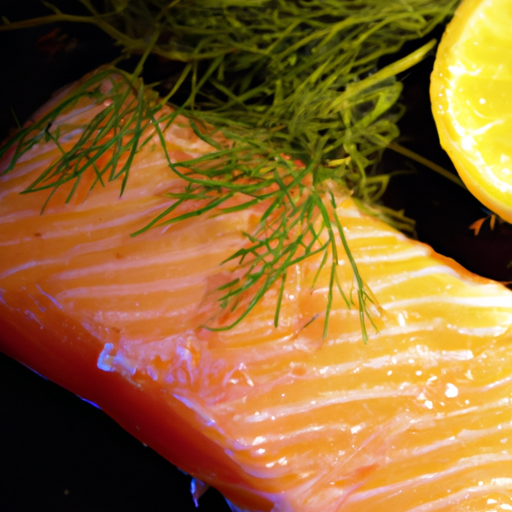
Imagine indulging in a tender, perfectly cooked piece of salmon infused with the refreshing flavors of lemon and dill. This mouthwatering dish boasts both health and taste, making it an ideal choice for those looking to achieve their wellness goals. Whether you’re following a paleo diet or simply seeking a flavorful, nutritious meal, this Baked Salmon with Lemon and Dill recipe is sure to satisfy your cravings and leave you coming back for more. So, grab your apron and prepare to elevate your dinner game with this delightful culinary creation.
Ingredients
Fresh salmon fillets
Fresh salmon fillets are the star of this dish. Look for fillets that are firm to the touch, with a vibrant pink or red color. Fresh fillets will have a clean, oceanic smell and should not smell fishy or off.
Lemons
Lemons provide a refreshing and tangy flavor to the salmon. They also help to brighten up the dish and complement the natural flavors of the fish. Be sure to choose lemons that are firm and have a bright yellow color, indicating they are ripe and juicy.
Fresh dill
Fresh dill adds a delicate and aromatic flavor to the salmon. It pairs perfectly with the lemon and enhances the overall taste of the dish. Look for vibrant green bunches of fresh dill with no signs of wilting or browning.
Salt
Salt is used to enhance the flavors of the salmon and bring out its natural taste. Use a good-quality sea salt or kosher salt to season the fish.
Black pepper
Black pepper adds a subtle kick and depth of flavor to the salmon. It complements the other ingredients and helps to balance out the dish. Freshly ground black pepper is recommended for the best results.
Olive oil
Olive oil is used to coat the salmon and help it cook evenly. It also adds a touch of richness and helps to keep the fish moist and tender. Use a high-quality extra virgin olive oil for the best flavor.
Preparation Time
Preparation: 10 minutes
Preparation time for this dish is relatively quick and easy. You will spend about 10 minutes getting everything ready before the salmon goes into the oven.
Cooking: 20 minutes
The salmon will be cooked in the oven for approximately 20 minutes. This cooking time ensures that the fish is perfectly cooked, moist, and flavorful.
Total: 30 minutes
With just 30 minutes from start to finish, this dish is a great option for a quick, yet satisfying meal.
Instructions
Step 1: Preheat the oven
Before you start preparing the salmon, preheat your oven to 400°F (200°C). This will ensure that the oven is hot and ready to cook the fish to perfection.
Step 2: Prepare the salmon
Place the fresh salmon fillets on a clean cutting board. If there are any pinbones present, use a pair of tweezers to remove them. Pat the fillets dry with a paper towel to remove any excess moisture.
Step 3: Season the salmon
Sprinkle both sides of the salmon fillets with salt and black pepper. Be sure to season evenly to ensure that every bite is flavorful.
Step 4: Add lemon and dill
Slice the lemons into thin rounds. Lay a few lemon slices on top of each salmon fillet. Next, sprinkle fresh dill over the lemon slices and salmon. The combination of lemon and dill will infuse the fish with a bright and herby flavor.
Step 5: Bake the salmon
Place the seasoned and dressed salmon fillets onto a baking sheet or into a baking dish. Drizzle a bit of olive oil over the top of each fillet to help keep them moist. Place the baking sheet or dish in the preheated oven and bake for approximately 20 minutes, or until the salmon is cooked through and flakes easily with a fork.
Step 6: Serve and enjoy
Once the salmon is cooked to perfection, remove it from the oven and let it rest for a few minutes. This allows the flavors to meld together. Serve the salmon as a main dish, alongside your favorite side dishes or on a bed of spinach. Enjoy this healthy and delicious meal!
Health Benefits of Salmon
Rich in omega-3 fatty acids
Salmon is one of the best sources of omega-3 fatty acids, which are essential fats that our bodies need for optimal health. These fatty acids have been shown to have numerous benefits, including reducing inflammation, improving heart health, and supporting brain function.
Excellent source of high-quality protein
In addition to being a great source of healthy fats, salmon is also an excellent source of high-quality protein. Protein is essential for building and repairing tissues, as well as supporting healthy muscles, skin, and hair.
Promotes heart health
The omega-3 fatty acids found in salmon have been shown to help reduce the risk of heart disease by lowering triglyceride levels, reducing blood pressure, and improving overall heart health. Incorporating salmon into your diet can be a delicious way to support a healthy heart.
Supports brain function
Omega-3 fatty acids are not only beneficial for heart health, but they also play a crucial role in brain function. These fats are essential for the development and maintenance of the brain and have been associated with improved cognitive function and a reduced risk of age-related cognitive decline.
Helps reduce inflammation
Chronic inflammation is linked to a wide range of health issues, including heart disease, diabetes, and certain types of cancer. The omega-3 fatty acids in salmon have anti-inflammatory properties that can help reduce inflammation in the body and support overall wellbeing.
Good for weight management
Salmon is a nutrient-dense food that is low in calories but high in protein and healthy fats. Including salmon in your diet can help keep you feeling satisfied and full, making it easier to maintain a healthy weight or support weight loss goals.
Boosts immune system
The nutrients found in salmon, such as vitamins D and B12, selenium, and omega-3 fatty acids, can support a healthy immune system. A strong immune system is essential for fighting off infections and diseases and promoting overall health and wellbeing.
Tips for Buying Fresh Salmon
Choose wild-caught salmon
When shopping for fresh salmon, opt for wild-caught varieties rather than farm-raised. Wild-caught salmon tends to have a higher omega-3 fatty acid content and is generally considered to be more sustainable and environmentally friendly.
Look for bright, firm flesh
The flesh of fresh salmon should be bright and vibrant, ranging from pink to red, depending on the species. Avoid fillets that appear dull or brownish in color. Additionally, the flesh should feel firm to the touch, indicating that it is fresh and of good quality.
Avoid fishy or ammonia-like smells
Fresh salmon should have a clean, pleasant smell that is reminiscent of the ocean. Avoid fish that emits a strong fishy or ammonia-like odor, as this can be a sign of spoilage.
Check for clear, undamaged eyes
If purchasing a whole salmon, check the eyes for clarity and make sure they are not cloudy or sunken. Clear, bright eyes are an indication of freshness.
Opt for thicker fillets
Thicker fillets are less prone to drying out during cooking and will result in moister, more flavorful salmon. Choose fillets that are at least 1 inch thick for the best results.
Tips for Preparing Salmon
Thaw frozen salmon properly
If using frozen salmon, be sure to thaw it properly before cooking. The safest way to thaw frozen salmon is to transfer it from the freezer to the refrigerator and let it thaw overnight. This slow thawing process helps to preserve the texture and flavor of the fish.
Remove pinbones before cooking
Before cooking the salmon, check for any pinbones and remove them using a pair of tweezers. Simply grasp the bone and gently pull it out in the same direction that it is facing.
Pat the salmon dry
Before seasoning the salmon, pat it dry with a paper towel. This helps to remove any excess moisture, allowing the seasonings to adhere better and ensuring that the salmon cooks evenly.
Let the salmon come to room temperature
For more even cooking, take the salmon out of the refrigerator and let it come to room temperature before cooking. Allowing the fish to warm up slightly will help prevent it from drying out during cooking.
Season both sides evenly
When seasoning the salmon, be sure to season both sides evenly. This will help to ensure a well-balanced flavor throughout the entire piece of fish.
Tips for Cooking Salmon
Preheat the oven for even cooking
To achieve perfectly cooked salmon, it’s important to preheat the oven before baking. Preheating allows for even cooking and helps to prevent any undercooked or overcooked areas.
Use a baking sheet or foil
To prevent the salmon from sticking, place it on a baking sheet lined with parchment paper or aluminum foil. This will make cleanup a breeze and ensure that the salmon retains its moisture.
Avoid overcooking
Salmon is best enjoyed when it is still slightly pink in the center and flakes easily with a fork. Overcooking can result in dry and tough salmon. Keep a close eye on the salmon during baking and remove it from the oven as soon as it reaches the desired doneness.
Check for doneness with a fork
To test if the salmon is cooked through, gently insert a fork into the thickest part of the fillet and twist slightly. If the flesh flakes easily and appears opaque, the salmon is done. If the fish is still translucent, it needs more time to cook.
Let the salmon rest before serving
After removing the salmon from the oven, allow it to rest for a few minutes before serving. This allows the juices to redistribute throughout the fish, resulting in a more flavorful and moist final product.
Variations and Serving Suggestions
Lemon-Dill Butter
Take your baked salmon to the next level by serving it with a dollop of lemon-dill butter. Simply mix softened butter with freshly chopped dill and a squeeze of lemon juice, then melt it on top of the hot salmon. The creamy and tangy butter adds a luxurious touch to the dish.
Garlic-Herb Crust
For a burst of savory flavor, create a garlic-herb crust for your salmon. Mix minced garlic, chopped fresh herbs such as parsley, thyme, and rosemary, and a drizzle of olive oil. Press the mixture onto the salmon fillets before baking, creating a flavorful crust that complements the fish beautifully.
Honey Mustard Glaze
Add a touch of sweetness and tanginess to your salmon with a honey mustard glaze. Whisk together equal parts Dijon mustard and honey, then spread the glaze over the salmon before baking. The glaze caramelizes during cooking, creating a deliciously sticky and flavorful coating.
Serve on a bed of spinach
Create a nutritious and well-rounded meal by serving the baked salmon on a bed of fresh baby spinach. The heat from the salmon will lightly wilt the spinach, creating a delicious contrast in texture and flavor. Drizzle the spinach with a simple vinaigrette or a squeeze of lemon juice for added freshness.
Pair with roasted vegetables
Roasted vegetables make the perfect side dish for baked salmon. Choose your favorite vegetables, such as asparagus, carrots, or Brussels sprouts, toss them with olive oil, salt, and pepper, and roast them in the oven alongside the salmon. The roasted vegetables add color, texture, and additional nutrients to the meal.
Frequently Asked Questions (FAQs)
Can I use dried dill instead of fresh?
While fresh dill provides the best flavor, you can use dried dill if you don’t have fresh on hand. Keep in mind that dried herbs are more concentrated in flavor, so adjust the amount accordingly. Start with half the amount of dried dill called for in the recipe and add more to taste if desired.
Can I make this recipe with frozen salmon?
Yes, you can make this recipe with frozen salmon. However, be sure to thaw the salmon properly before cooking. Follow the instructions for thawing frozen salmon mentioned earlier in the article.
Can I use other types of fish?
While this recipe is specifically written for salmon, you can adapt it to other types of fish if desired. Fatty fish such as trout, mackerel, or sardines can be substituted for the salmon with similar results. Adjust the cooking time accordingly, as different types of fish may require shorter or longer cooking times.
What side dishes go well with baked salmon?
Baked salmon pairs well with a variety of side dishes. Some popular options include roasted vegetables, steamed asparagus, garlic mashed potatoes, quinoa, or a fresh green salad. Choose sides that complement the flavors of the salmon and add variety to the meal.
How long can I store leftovers?
Leftover baked salmon can be stored in an airtight container in the refrigerator for up to 2-3 days. To reheat, place the salmon in a foil packet and warm it in a preheated oven at 350°F (175°C) for about 10-15 minutes, or until heated through.




